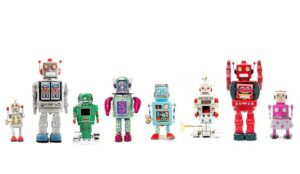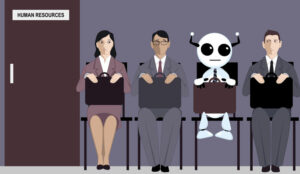Megan Haas of Interactions discusses a new podcast based on artificial intelligence (AI), The ConversAItion, sharing some key takeaways from an episode regarding social robots.
“Social robots—it’s something people have dreamed of for a very long time. But it’s only recently been possible to build something that’s actually useful, of course much thanks to advancements in speech recognition and computer vision.”
Jim Freeze and Gabriel Skantze talk social robots, AI-powered robots that look and communicate like humans. They discuss their development, applications and how people building them can navigate the “creep” factor.
Gabriel is a Professor in Speech Communication and Technology in Stockholm and also the co-founder at Furhat Robotics, a company that builds human-like social robots.
Here are the four takeaways:
1. Social robots are autonomous, AI-powered robots designed to interact and communicate with humans. Furhat is a social robot with human-like expressions and advanced conversational AI capabilities.
Autonomous robots have been featured in popular culture for decades, appearing in films from The Iron Giant to Terminator 2.
Now, thanks to technological advancements, social robots are a reality—and advanced to the point of being useful.
Furhat Robotics, a company that develops human-like social robots, has disrupted the industry’s traditional focus on mechatronics (how robots move) by instead prioritizing the quality of the interaction with humans.
2. A disconnect between appearance and movement is the root cause of people’s uneasiness with human-like robots.
The “uncanny valley” is a concept that describes a human encounter with a robot or a computer interface that looks real—but not quite real enough.
Often, social robots have a super-realistic appearance, so you expect to see the same lifelike accuracy in its microexpressions. But microexpressions are very difficult to achieve, so usually there’s a disconnect.
They might, as Gabriel noted: “look stiff and sort of smile in an awkward way.” (Yikes.)
To combat creepiness, Furhat aims to match a robot’s appearance and behaviour. Their robots are human-like, but they’re not superrealistic. The movement and expressions are sophisticated, but the face is a little cartoonish. The effect is similar to Pixar computer animation.
3. Right now, typical applications for social robots are found in the service industry–but use cases may soon expand.
Furhat is developing social robots to act as service agents in airports and train stations, to address travellers’ questions.
They are also working with a recruitment company to create a robot that can conduct early-stage interviews, the goal being to reduce bias against age, ethnicity, weight and height.
Candidates would of course ultimately meet with a human interviewer, but the robot would eliminate the chance someone is filtered out due to bias early on.
4. Social robots are intended to provide better service—not to replace the human service agents we already have.
Social robots aim to complement human workers, not replace them. In schools, for instance, Furhat could help teachers by facilitating lessons in small groups of students separated by learning style.
The Furhat robot is something you have to see to believe. See it in action on the Furhat YouTube channel.
To hear the full episode, click here.
Author: Guest Author
Published On: 3rd Oct 2019 - Last modified: 19th Jul 2022
Read more about - Guest Blogs, Interactions



































